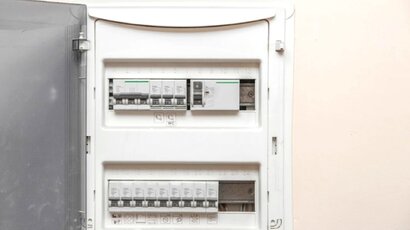I’ve had a few questions from clients lately about safety switches. Most people don’t understand the difference between safety switches, electrical circuit breaker, or surge protectors, so I’d spell it out here.
Safety switches are designed to prevent injury or death by monitoring the flow of electricity through electrical circuits or power points. They automatically shut off your electricity supply when the electrical current is detected leaking from faulty switches, wiring or electrical appliances in your home. This stops the chance of current flowing to earth and through a person and electrocuting them.
Installing a safety switch is a reasonable safety measure that protects you, your family and visitors to your property.
In Victoria, safety switches must be installed on the power and lighting circuits in new and older properties when extensive renovations occur. If it’s essential to have safety switches in new homes, installing them in older properties makes a good deal of sense.
Today more than ever, we have more electrically powered gadgets. Most of us have the latest labour-saving devices like cooking appliances, cleaning appliances, heating/cooling appliances and various indoor and outdoor lighting. And then there’s the ever-increasing range of entertainment systems. TVs and computers in just about every room of the house!
Before you find out the hard way, get safety switches installed on your switchboard through a severe electrical incident.
If you’re unsure whether you have safety switches fitted to your switchboard, check by looking at your switchboard for a “test reset” button. That tells you that you have a safety switch installed. When you open your switchboard, you should see something like this.
{{img:'the-truth-about-safety-switches.jpg' | alt | title | height | width | lazyload}}
All homes have a circuit breaker or fuses. These are designed to protect the wiring and appliances within your home. Only electrical safety switches are designed to protect people.
Safety switches are often confused with circuit breakers and surge protectors. Here is a quick guide to help understand the differences.
Surge protectors safeguard your appliances and wiring from voltage surges like a lightning strike. Safety switches and surge protectors play entirely different roles. Surge protectors protect electrical appliances, and safety switches protect people.
Circuit breakers cut the power off when electrical wiring has too much current. Too much current flowing through a circuit will wire heat or perhaps one of your electrical appliance’s wires to unsafe levels and potentially cause an electrical fire.
Fuses work in the same way as circuit breakers. Both fuses and circuit breakers do not protect people from electrical shock.
Safety switches monitor the flow of electricity through a circuit. They automatically shut the electricity supply when the current is detected leaking from faulty switches, wiring or electrical appliances. This stops the chance of currents flowing to earth through a person, giving them a serious electric shock.
Nothing is failsafe. You should regularly check your safety switches. Like a smoke detector or other safety device, it cannot protect you if it is not working correctly. It is also essential to ensure your electrical appliances, wiring, extension leads, and all other electrical equipment are regularly checked and kept in good working order.
We recommend you to test your safety switches at least every three months. Here’s how:
If it doesn’t work, contact us immediately.
If your safety switch turns off your power, there’s a fault somewhere – either in your wiring or with an appliance. Here’s what to do:
Are you ready to get safety switches installed on your property? Ensuring your electrical safety is vital to keeping you and your family protected. No matter what device, electrical installation should always be done by a licensed electrician in Melbourne.
Electrical work is never a job, no matter how handy you are around the house! It’s dangerous and illegal.
Only a licensed electrical contractor can install a safety switch and understand electrical safety. So call us for a fast quote. We’ll look after you and keep you safe!
{{author:bio}}
Find them on their website: Precision Electrical & Plumbing, Facebook and LinkedIn.
Find how you can ensure the safety of your rental properties from electrical hazards. Learn how to identify risks and ensure compliance with Victorian safety regulations.
Read MoreYour safety switch is one of the most important electrical components of your home. Learn how to reset it safety and correctly with the team at Precision Electrical & Plumbing!
Read MoreWe all know switchboards are vital for your home's electrical system, but how do they work? Discover everything you need to know about switchboards in our informative guide!
Read More


